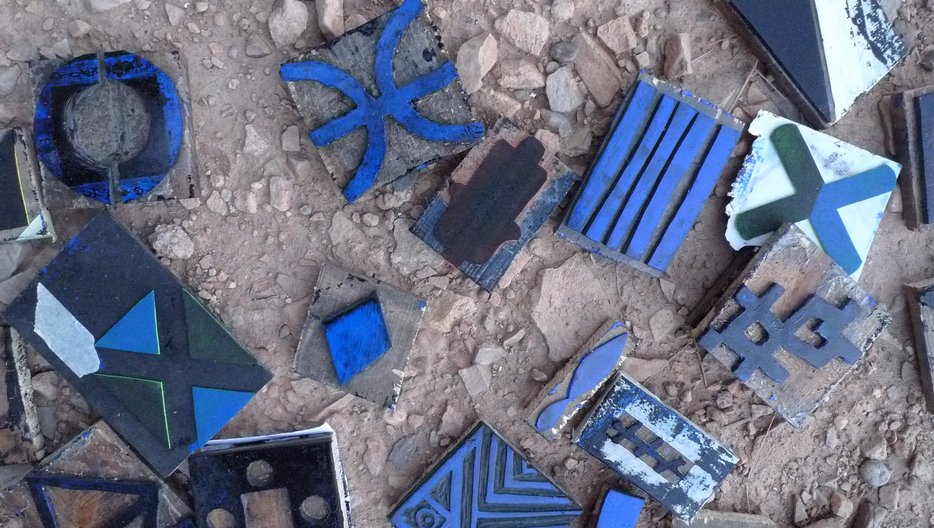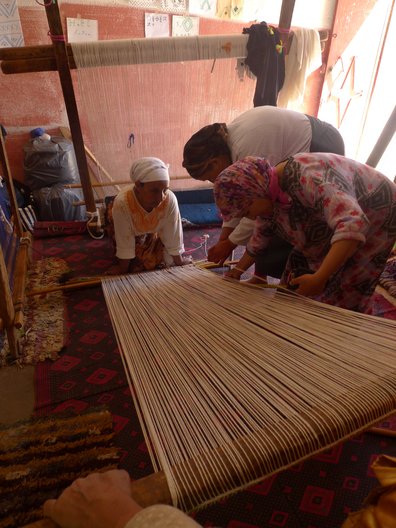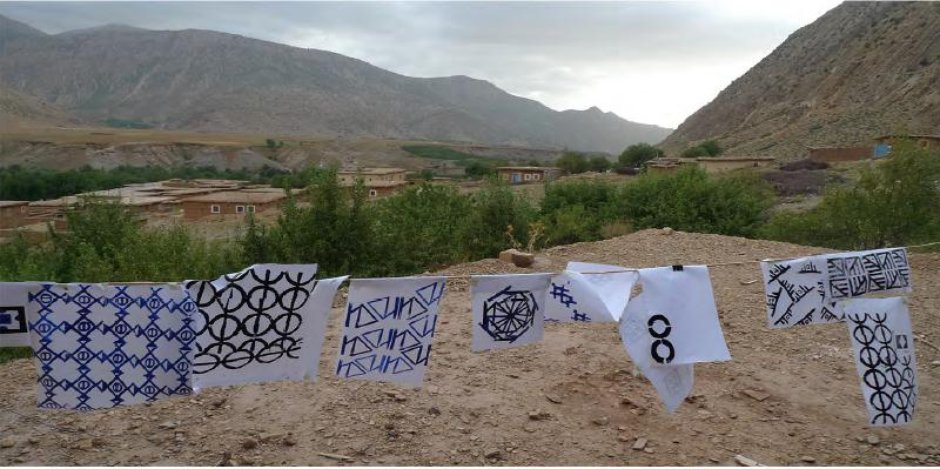18 October 2015
by Rebecca Hoyes
“A woman who weaves 40 carpets is guaranteed a place in heaven”
Moroccan Proverb
As an initial part of this amazing residency pairing Anou artisans in Morocco with designers, I led a workshop on something I knew very little about, the language and meaning of symbols found in Amazigh culture.
Whilst this could have been a risky endeavour it captured the spirit of what I hoped to gain from this residency, new knowledge, new insights and the opportunity to share my practice in exchange for something unknown.
Early on in the workshop I knew I was onto something and all would be well, Kenza a weaver and one of the Anou artisan leaders described about how secret messages had been sent by weaving the Tamazight language and symbols into rugs .The idea that that patterns and shapes could be arranged to communicate hidden messages and that an everyday object, the rug could carry such stories captured my imagination. So it was with Kenza and the weavers of Ait Hamza a small village in the mid Atlas Mountains of Morocco that we began to unravel these messages and I learnt about the traditions and superstitions of Berber textile heritage and of the role of the weaver in preserving these.
The Association of Tifinite is a cooperative of 20 women based in a small mud building close to the mosque in the centre of the village. The weave “shed” has space for 3-4 vertical looms, it is far from spacious, there is no electricity so the weavers work during the day light hours only and return home at midday and times of prayer.
Central to the village, the “weave shed” is a place not just for production but somewhere the women of the village come together to chat, laugh, sing and share stories whilst weaving, spinning and setting up looms. It is a cooperative in the truest sense with everyone working together for a common goal.
It was in this spirit of cooperation, collaboration and exchange that I became part of, which shaped our work and our conversations around the symbols woven into the brightly colored carpets. I collected stories from each of the women asking them about the motifs that held particular significance to them.
Many of the woven symbols are associated with protection from evil spirits and have roots in the nomadic heritage of the Amazigh people. Motifs include triangles, diamonds, zigzags, stylized flies, birds, and the shape of a saw as well as others symbols linked to fertility, and prosperity such as bird tracks or animal claws. This wonderful jumble of shapes and patterns- could also be found on doorways, walls and in the tattoos on the hands and faces of the weavers. Their stories were everywhere I just had to look…
In Amazigh society the weaver, the wool and the loom are all revered. The beliefs and superstitions around the loom allowed me an insight into this magical world. The loom was blessed with songs and prayer before and during weaving, then when the weaving was cut down, the warp threads were splashed with salt and water to keep away bad spirits. I felt an immense privilege to be part of these rituals.
My limited knowledge of Tamazight on reflection proved at times to be a huge asset. I noticed things, small details the significance of which only later would become clear. I listened in a language I couldn’t comprehend but came to understand the importance of visual storytelling. I learnt to remain curious, to enjoy the daily rituals and the slow meditative pace associated with the weaving
It was wonderful to meet so many generous and inspiring people who welcomed me into their homes, shared their stories, taught me about their heritage and for who the brightly coloured carpets are key to both the contination and evolution of the Amazigh identity.
Thank you to weavers of Ait Hamza for a window on their amazing world.
Rebecca Hoyes is one of the three chosen UK residents for our 2015 Common Thread: Anou Residencies program. Read all about our program.
Take a look at the wonderful fanzine to see the outcomes of the project.







